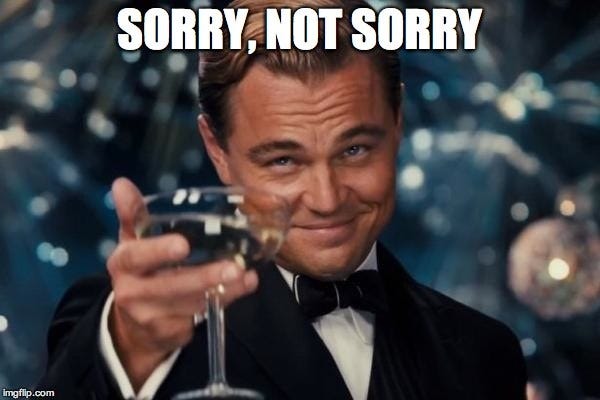Ever seen one of those tweets with a million likes?
Time and again, I’ve wondered why a tweet with 1m+ likes did not correspond to more followers for the poster. Surely, even just 1% of that traffic should convert to 10,000 new followers for them.
But when you scroll down their profiles looking for other gold nuggets, all you find are utterly banal tweets.
Tweets about the weather. Their cat. Their missing phone charger.
Conclusion: they simply got lucky.
Virality is a science.
Virality, at its core, is about odds. You can do certain things to increase the probability of going viral – but you’ll never be able to fully control when or how that happens. In this post, we’ll look at the things we can control and how to strengthen our chances of going viral.
Let’s take “1 million likes” as the benchmark of virality (we’ll use Twitter as our sample platform in this post). Generally speaking, you can go viral on social media by:
- Actively broadcasting your content to many people at once
- Passively delivering it to one person at a time
- Waiting to get lucky with That One Tweet™; or
- Posting good content regardless of how many followers you have
The first and easiest way to go viral is publishing your content to many people at once (“broadcast diffusion”). If you have 50,000 followers, going viral will be easier for you than for a person with only 1,000 followers.

Having many followers increases the odds of you going viral. Celebrities fall into this category. If you post a pic of yourself baring your bum, maybe your Aunt Jemimah sends a screenshot to your mom. When Kim Kardashian does it, she “breaks the internet.“
Secondly, you can try passively showing your content or message to a million people individually. This is the equivalent of posting content with the right hashtags or applying SEO techniques to your blog posts.
There are always people searching for content on the web, and your content might get shown to them repeatedly if it is tagged correctly.

The more views you then get, the higher your content is ranked, which exposes it to more people, which leads to more views, etc. This is essentially how the Instagram “Explore” page works.
Thirdly, you can wait to get lucky. This seems to be the strategy of most people hoping to go viral on the internet. They post random tweets and hope Lady Luck smiles on them one day with That One Tweet™. This is obviously not a viable strategy.

Lastly, you can try posting consistently good content for your ten followers, and nothing else. However, good content is worthless if nobody knows it exists.
So, how can you increase your odds of going viral on social media? Let’s explore a few options.
1. Consistently post excellent content.
This is the most basic requirement. Your social media account(s) should be a source of consistently valuable insights.
There are four main ways of achieving this:
- Educating people
- Motivating people
- Entertaining people
- Informing people
Ideally, you want some combination of the above. This will depend on your skillset, personality and profession.
Some professions lend themselves more easily to a combination of the above. Journalists and anchors, for example, inform people daily.
And if they’ve got a sense of humour, sharp wit, or both, they can build a massive following by spinning the news into comic relief. Think Trevor Noah here.
Conversely, comedians entertain people by profession. If they can also use their material to inform people of what’s happening, their odds of going viral shoot up. Think Sarah Cooper here, a comedian who shot to fame with her hilarious lip-sync videos of Donald Trump’s bungling responses to the coronavirus pandemic.
Finance professionals are another easy group. Minor South African celebrities like Nicolette Mashile and Koshiek Karan employ several of the above strategies:
- They inform people about financial news
- They educate people on making sensible financial decisions
- They motivate people to cut their cards and stay debt-free
- They entertain people with funny quips and witty takes on cultural events
As a result, both of them have significantly grown their audiences over time.
The likes of Melusi Tshabalala and Joe Human also seemingly “went viral” overnight. However, if you look deeper into it, you’ll discover they’ve been helping people for a long time.
Melusi was teaching people isiZulu one day at a time before he was “discovered.” And for a long time, Joe had been handing out branding advice to small business owners who needed guidance.
Their recipe contains the same sauce: helpful, consistent advice over time.
In other words, it took them years to be “overnight” successes.
One post at a time
Think of it like building a pile of dry wood and dousing it in petrol. Every day, you add a piece of kindling to the pile.
Going viral is the equivalent of someone accidentally throwing a lit cigarette into your pile and lighting it up (“discovery”). But if your pile of wood wasn’t already flammable (you were piling up rocks instead), that one moment of discovery won’t achieve anything.
To determine if your posts are flammable, ask yourself this: are your tweets from a year ago still valid? Relevant? Insightful? Funny?
Or are they the ramblings of a bored social media user?
In a world of limitless options, nobody will follow you if they aren’t deriving any value from you.
Post with intent. If you set out to genuinely help people, your odds of going viral increase significantly.
2. Interact with your network.
Imagine you’re a new student at school.
Your goal is to make as many friends as possible and become popular. What would get you there faster? Is it:
- Meeting and befriending as many people as possible; or
- Sitting by yourself in the cafeteria and hoping you spontaneously get elected a Prefect?
The truth is, you’re going to have to get out of your shell and approach other people. Strike up a conversation or two. Show them just how awesome you are.
You then befriend them one by one, grow your network and expand your influence.
Do that well enough, fast enough, and consistently enough, and you might just make Prefect by the end of the term.
It’s the same with social media.
You can’t sit in your own little corner of the internet and “hope” you randomly get discovered and go viral.
You have to relentlessly seek out others in your network and interact with them. Engage with their posts. Share the good stuff. Introduce cool people to other cool people (and cool things).
Just like in high school, the outgoing kid who knows all the cool hangout spots gets invited to parties. The wallflower, meanwhile, sits at home moaning in their diary about how nobody takes them seriously.
Put yourself out there. Be a well of discovery.
3. Promote yourself.
The social kid in our fictitious high school is almost definitely on Instagram. They’re also on Twitter, Facebook, Snapchat, Twitch, TikTok and other as-yet-undiscovered platforms.
Obviously.
They waste no time asking new friends to check them out on these platforms. They know you’d like their content. They are awesome, after all.
Similarly, you need to adopt a mentality of relentless promotion – tactfully done, of course.
If you write a blog, link back to your social profiles. Add it to your business cards. Mention it after speaking gigs or performances. Ask to connect with other people on LinkedIn or Twitter while networking. This should be an ongoing aspect of building your personal brand.
Regularly inform people where they can find you on the web. Make it easy for them to click over to your profile using nice links like this one:
Now let’s say you’re posting great content, handing out your social media handles, and following everyone in your network. What if you still haven’t gone viral?
4. Interact with the stars
Celebrities tend to go viral more quickly by having one thing you don’t: traffic.
As such, engaging with a celebrity’s tweets is a form of boosting your own discovery. This is where the 10% rule comes into play.
Let’s say Obama posts something insightful and gets 100k likes. If you are the first to reply with something insightful, 10% of that traffic accrues to you (10k likes).
Of those 10k likes, 10% of them (1000 people) will check out your profile. And if they find great content on your profile, 10% of that number (100) may convert to followers.
But if all they find are random tweets about your cat, the weather and other assorted brainfarts, they will leave.
This is why people with viral tweets don’t always see a corresponding increase in followers. People landed on your profile and weren’t impressed.
Nobody likes flukes. That’s why “one-hit wonder” is still a pejorative term.
You don’t always have to agree with the celebrity, by the way. Sometimes, being contrarian can be an effective strategy.
If Donald Trump posts something you don’t agree with, you can reply and vehemently disagree with him. Those who disagree with your views will either retort, ignore or block you.
But those who agree with you will head on over to your profile. And if these curious viewers like what they see, there’s a higher chance of them converting.
Twitter is full of celebrities, so you can play this game all day.
But in the end, it all comes back to the quality of your own content.
Post with intent.
Be ready for fame
Say you’ve been posting golden nuggets for years, connecting with everyone in your network, and squeezing the juice out of every hashtag. One night, you tweet something innocuous, go to bed, and wake up the next morning to a billion notifications.
Congratulations: you’ve gone viral.
How do you leverage this new-found fame?
On Twitter, most people post a proverbial “Soundcloud” link under their viral tweet. This directs people to their music, blog, Etsy shop, Instagram account or YouTube channel.
But the same rules apply: if people don’t like your linked content, they will not subscribe to it.
Remember: virality doesn’t grant legitimacy.
All it does is shine a light on you. You still need to impress people with stellar content to make them stay.
But there are ways to prepare for this. The most obvious is including relevant links in your bio to the work you’d want people to see first.
You won’t always be awake (or next to your phone) while you’re going viral. A well-written bio with links to your work can direct incoming traffic on your behalf.
What about paid social?
You can spend money on boosting selected content or promoting your entire profile (or Page, if you’re on Facebook). Still, the same rules apply:
1. If you don’t have a wealth of consistently good content, your paid reach won’t convert.
Let’s go back to our high school example. Paying to put up a banner in the school cafeteria with your Instagram handle on it might get you some traffic. Still, if all you have are boring, grainy selfies then nobody will follow you.
2. If you don’t regularly interact with your desired network, your content will feel foreign. Your new followers will eventually unfollow you in favour of someone more relevant.
Sending everyone to a profile with irrelevant content (or worse, no content) will lead to high churn. Ensure the content you post is tailored to your audience.
Conclusion
Social media virality is a function of consistency, promotion, targeted distribution and luck.
That’s probably not what you wanted to hear.
As in business, success is the function of a compelling product married to masterful marketing.
A time-machine you invented that only your mom knows about won’t sell. Similarly, a Superbowl ad for a buggy, poorly designed mobile app is a colossal waste of money.
It’s the same with social media.
You need to have A-grade content on your timeline. Prune the least-performing posts and highlight your best ones.
You also need to interact with like-minded people in your network as much as possible. This habit increases the odds of your content being discovered and shared.
You can also interact with social media celebrities and ride popular trends to drive some traffic to your profile.
And if you do all of this consistently, the odds of you going viral increase.
It’s never guaranteed, of course.
But you’ll be ready when it happens.
Good luck.
Cool links:
- “Hit Makers” by Derek Thompson dives deeper into the concept of virality and how to achieve it. I heartily recommend it.
- Need help managing your social media presence? Learn more at my website and pop me a mail.







